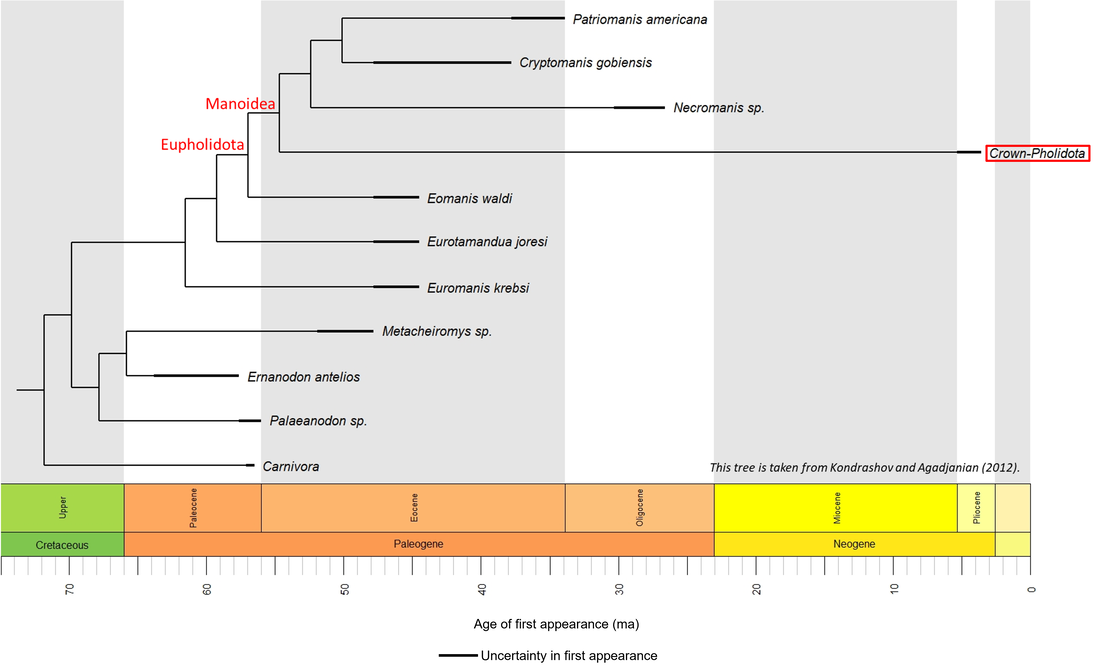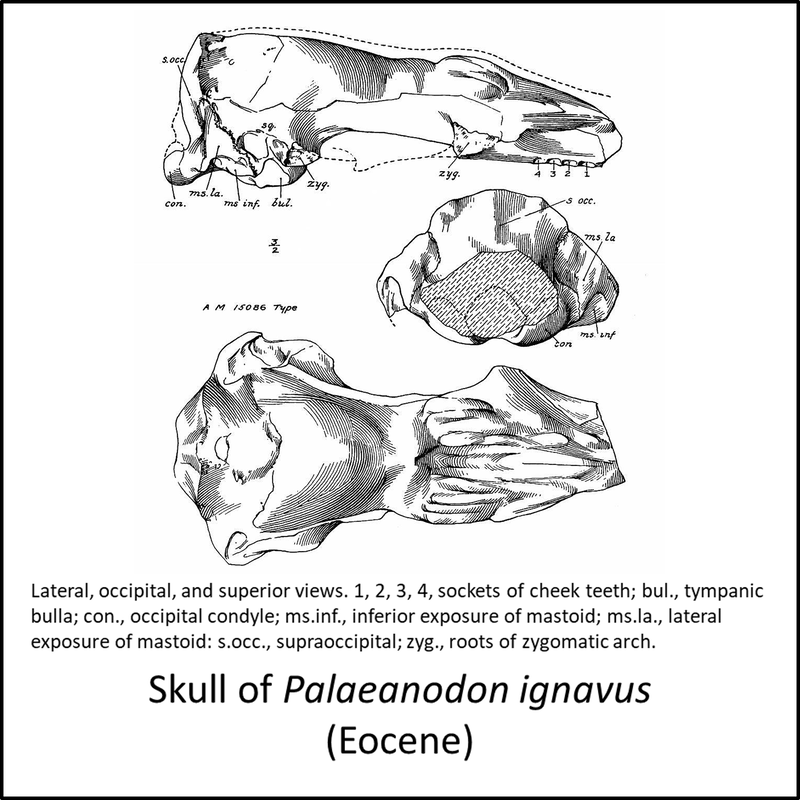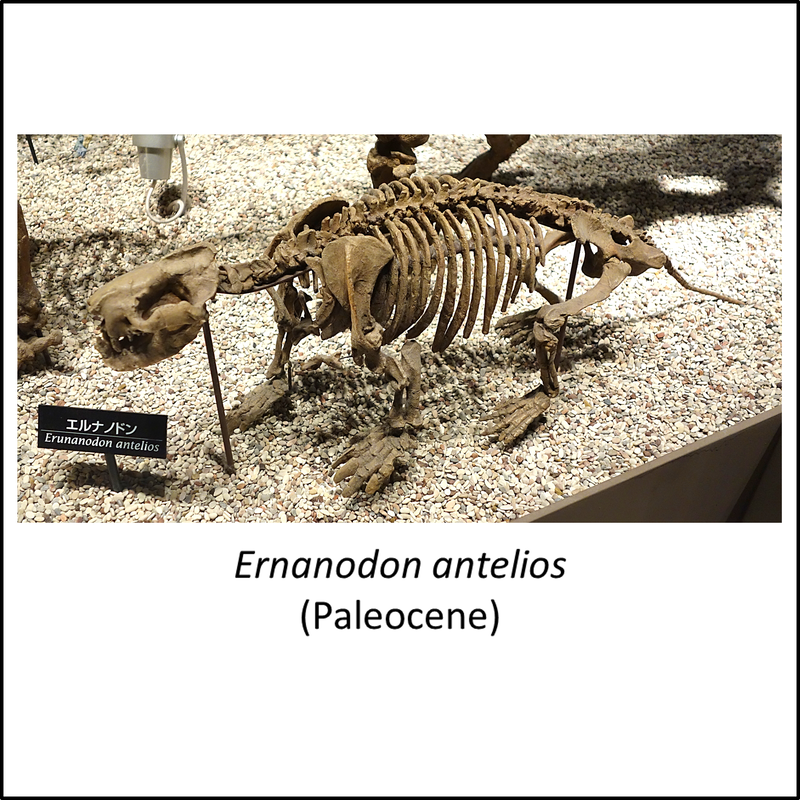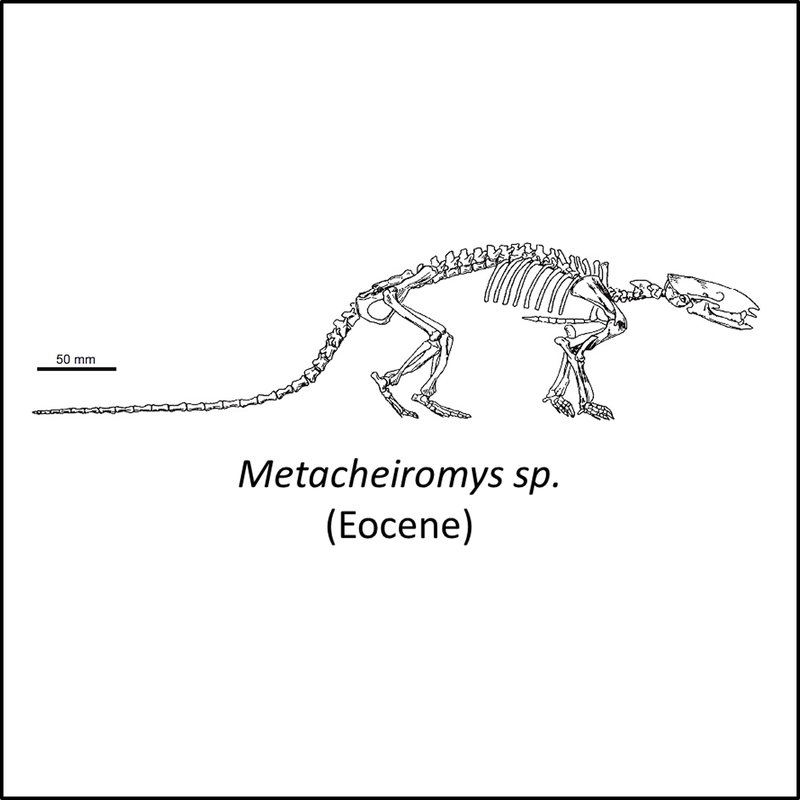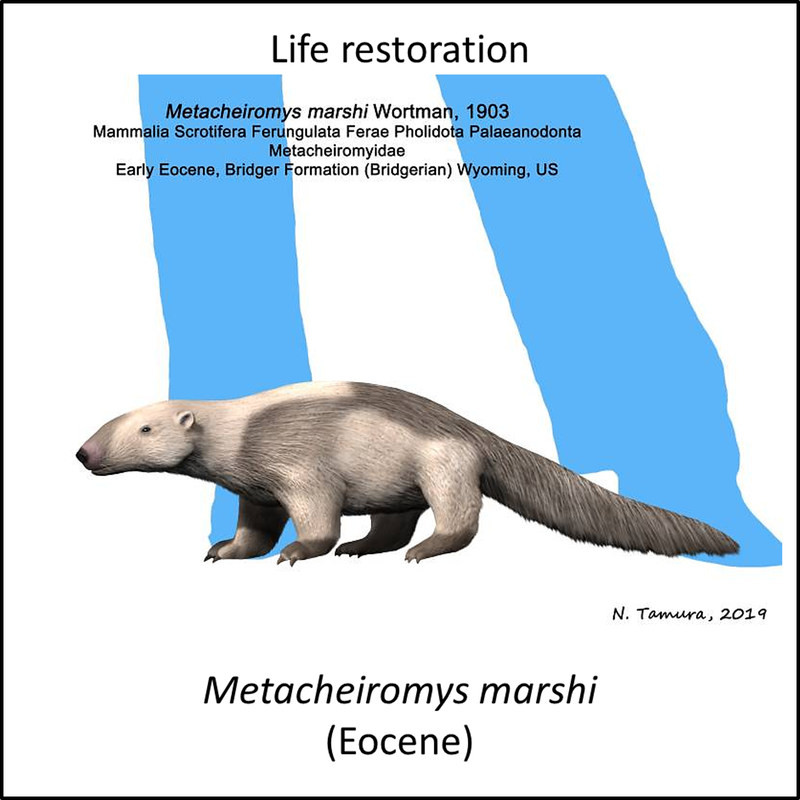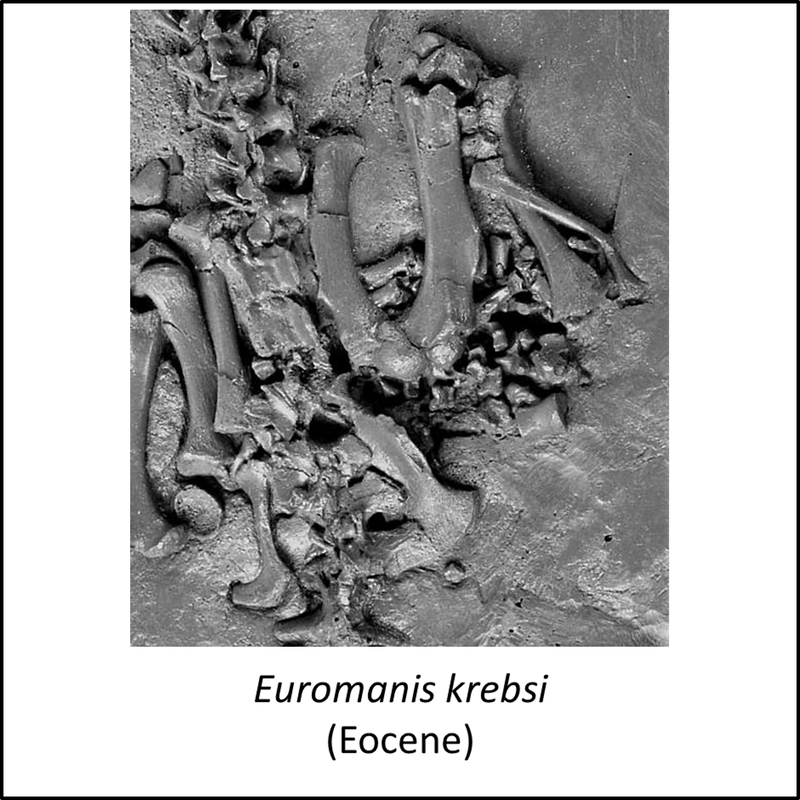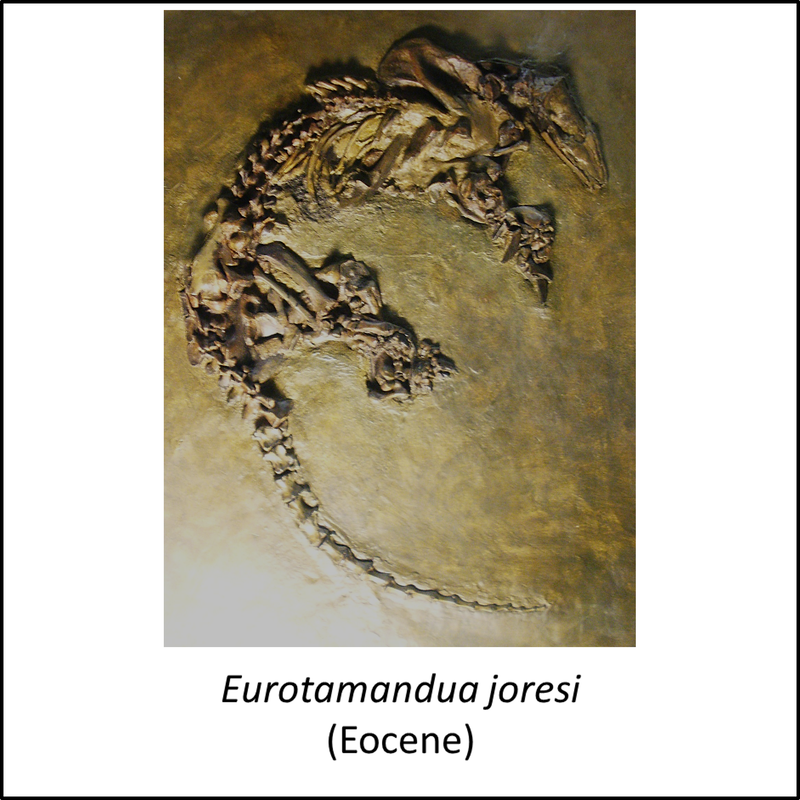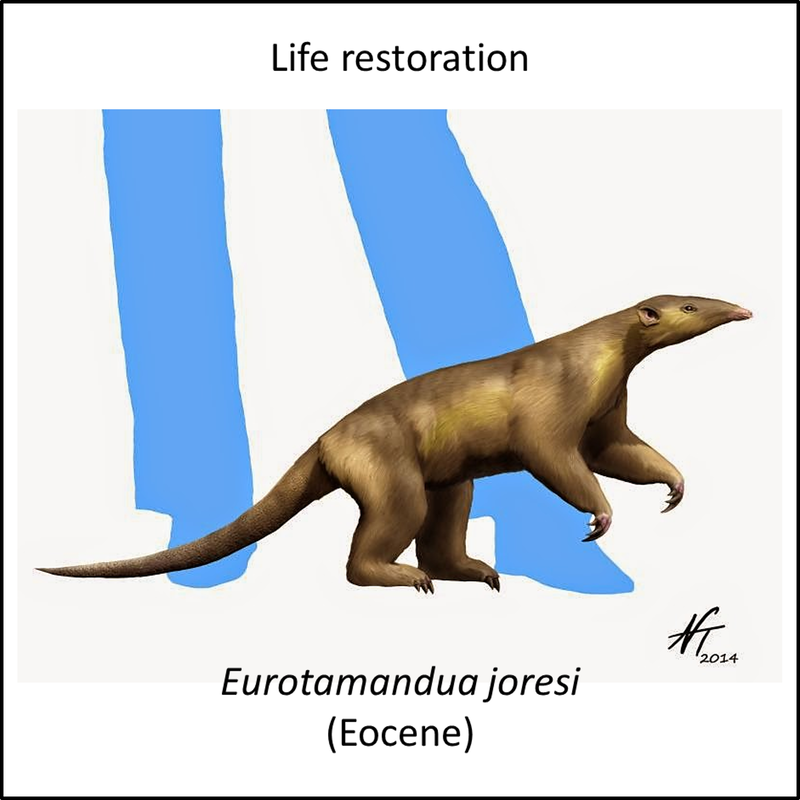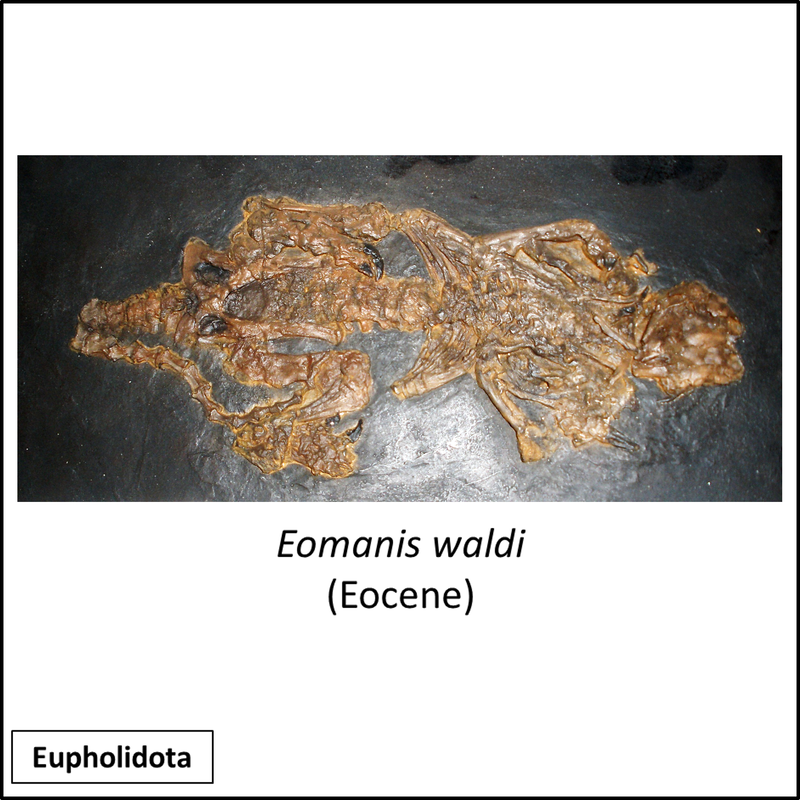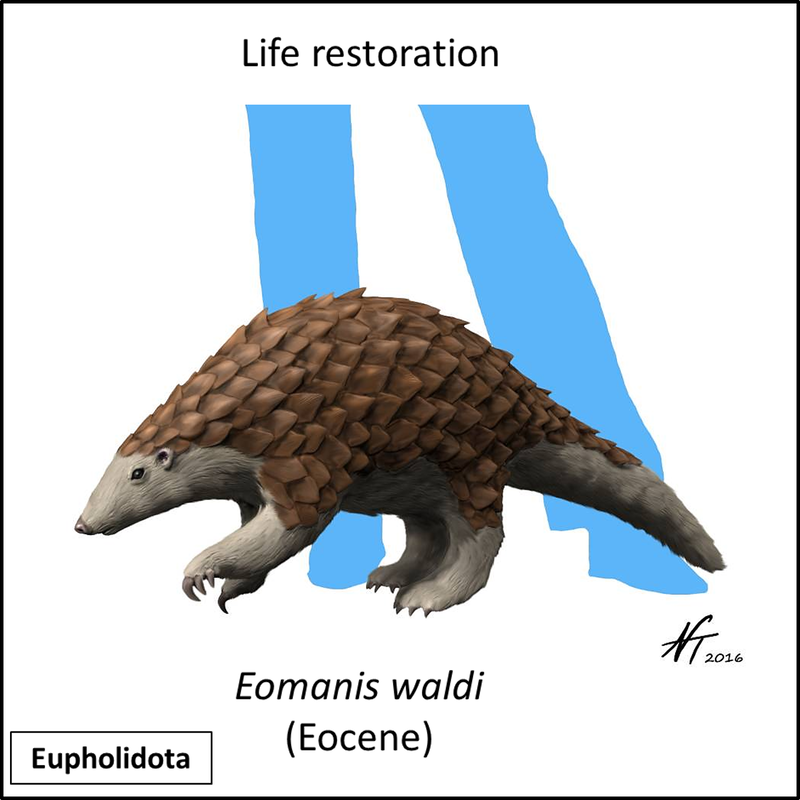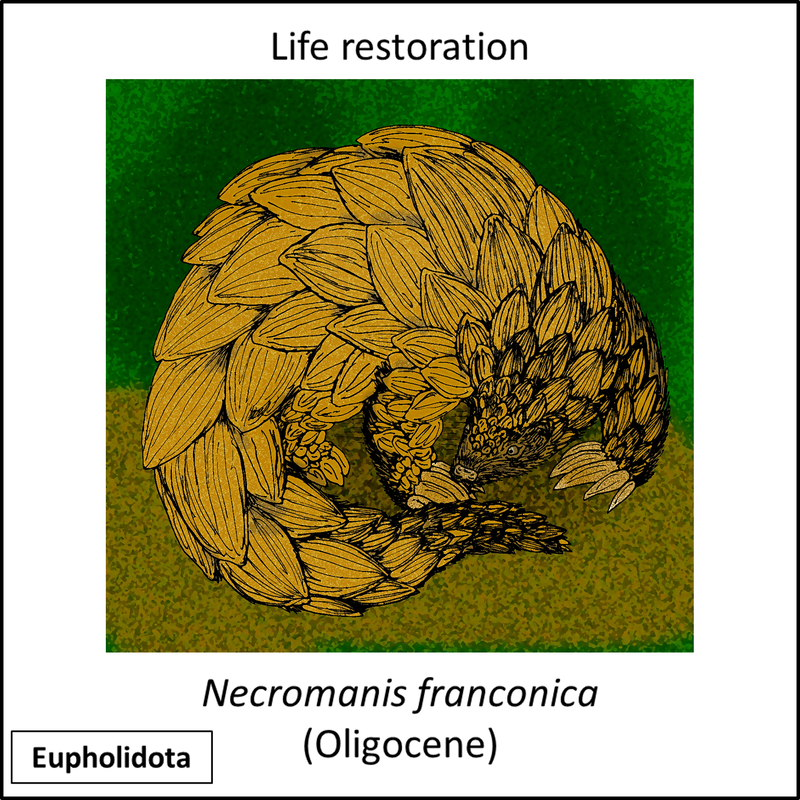The pangolins, or scaly anteaters (order Pholidota, infraclass Eutheria) have backs covered with large, overlapping scales made of keratin. They comprise only one extant family, the Manidae, which contains three genera.
Few phylogenetic analyses of the stem-Pholidota have been published. The most recent is that by Kondrashov and Agadjanian (2012), on which the following time tree is based:
Few phylogenetic analyses of the stem-Pholidota have been published. The most recent is that by Kondrashov and Agadjanian (2012), on which the following time tree is based:
Figure 1. Phylogenetic time tree of the stem-Pholidota
The oldest known member of the stem-Pholidota is Ernanodon antelios, described from the middle Paleocene (Selandian) Nongshan Formation at Nanxiong in Guangdong Province, China (Ting et al, 2005). It is illustrated below, together with other species shown in Figure 1 for which images are available in the public domain (for a larger view, click on image):
Figure 2. Images of stem-group pangolins
The above images are ordered from most basal to most crownward, and there is a hint of a progression towards more elongate snouts (from Ernanodon to Eurotamandua) and then a change, within the Eupholidota, to species that have scales and appear quite similar to modern pangolins.
The oldest known crown pangolin is Smutsia gigantea, the modern giant pangolin that has been found as a fossil in the Early Pliocene Quartzose Sand Member of the Varswater Formation at Langebaanweg, South Africa (Botha and Gaudin, 2007). No images of this fossil are available in the public domain, but a living representative of the species is shown in the header above.
The available fossil data indicate that the pangolin stem group developed from Paleocene to Early Pliocene time, representing a stem-to-crown transition of at least 52 million years. However, the fossil gap of at least 21 million years between Necromanis and Smutsia allows the possibility that this transition might be significantly shortened in the future by the discovery of crown group fossils that are older than Smutsia.
The oldest known crown pangolin is Smutsia gigantea, the modern giant pangolin that has been found as a fossil in the Early Pliocene Quartzose Sand Member of the Varswater Formation at Langebaanweg, South Africa (Botha and Gaudin, 2007). No images of this fossil are available in the public domain, but a living representative of the species is shown in the header above.
The available fossil data indicate that the pangolin stem group developed from Paleocene to Early Pliocene time, representing a stem-to-crown transition of at least 52 million years. However, the fossil gap of at least 21 million years between Necromanis and Smutsia allows the possibility that this transition might be significantly shortened in the future by the discovery of crown group fossils that are older than Smutsia.
References
Botha, J., & Gaudin, T. (2007). An Early Pliocene Pangolin (Mammalia; Pholidota) from Langebaanweg, South Africa. Journal of Vertebrate Paleontology, 27(2), 484-491.
Gaudin, T. J., Emry, R. J., & Wible, J. R. (2009). The phylogeny of living and extinct pangolins (Mammalia, Pholidota) and associated taxa: a morphology based analysis. Journal of mammalian evolution, 16(4), 235-305.
Kondrashov, P., & Agadjanian, A. K. (2012). A nearly complete skeleton of Ernanodon (Mammalia, Palaeanodonta) from Mongolia: morphofunctional analysis. Journal of Vertebrate Paleontology, 32(5), 983-1001.
Ting, S., Wang, B., & Tong, Y. (2005). The type specimen of Ernanodon antelios. Journal of Vertebrate Paleontology, 25(3), 729-731.
Gaudin, T. J., Emry, R. J., & Wible, J. R. (2009). The phylogeny of living and extinct pangolins (Mammalia, Pholidota) and associated taxa: a morphology based analysis. Journal of mammalian evolution, 16(4), 235-305.
Kondrashov, P., & Agadjanian, A. K. (2012). A nearly complete skeleton of Ernanodon (Mammalia, Palaeanodonta) from Mongolia: morphofunctional analysis. Journal of Vertebrate Paleontology, 32(5), 983-1001.
Ting, S., Wang, B., & Tong, Y. (2005). The type specimen of Ernanodon antelios. Journal of Vertebrate Paleontology, 25(3), 729-731.
Image credits – stem-Pholidota
- Header (Smutsia gigantea): David Brossard creativecommons.org/licenses/by-sa/2.0/
- Figure 2 (Palaeanodon ignavus): W. D. Matthew, Public domain, via Wikimedia Commons
- Figure 2 (Ernanodon antelios, fossil): Daderot, CC0, via Wikimedia Commons
- Figure 2 (Ernanodon antelios, life restoration): Nobu Tamura, under Creative Commons Attribution- ShareAlike (CC BY-SA) license
- Figure 2 (Metacheiromys sp.): Gheerbrant, E., Rose, K.D., and Godinot, M. (modified by Rose and Emry 1993 after Simpson 1931), CC BY-SA 4.0 <https://creativecommons.org/licenses/by-sa/4.0>, via Wikimedia Commons
- Figure 2 (Metacheiromys marshi): Nobu Tamura, under Creative Commons Attribution- ShareAlike (CC BY-SA) license
- Figure 2 (Euromanis krebsi): Horovitz I, Storch G, Martin T, CC BY-SA 4.0 <https://creativecommons.org/licenses/by-sa/4.0>, via Wikimedia Commons
- Figure 2 (Eurotamandua joresi, fossil): Ghedoghedo, CC BY-SA 3.0 <https://creativecommons.org/licenses/by-sa/3.0>, via Wikimedia Commons
- Figure 2 (Eurotamandua joresi, life restoration): Nobu Tamura, under Creative Commons Attribution- ShareAlike (CC BY-SA) license
- Figure 2 (Eomanis waldi, fossil): Ghedoghedo, CC BY-SA 3.0 <https://creativecommons.org/licenses/by-sa/3.0>, via Wikimedia Commons
- Figure 2 (Eomanis waldi, life restoration): Nobu Tamura, under Creative Commons Attribution- ShareAlike (CC BY-SA) license
- Figure 2 (Patriomanis americana): Skye McDavid, CC BY-SA 4.0 <https://creativecommons.org/licenses/by-sa/4.0>, via Wikimedia Commons
- Figure 2 (Necromanis franconica): English Wikipedia user Apokryltaros, CC BY-SA 3.0 <http://creativecommons.org/licenses/by-sa/3.0/>, via Wikimedia Commons
